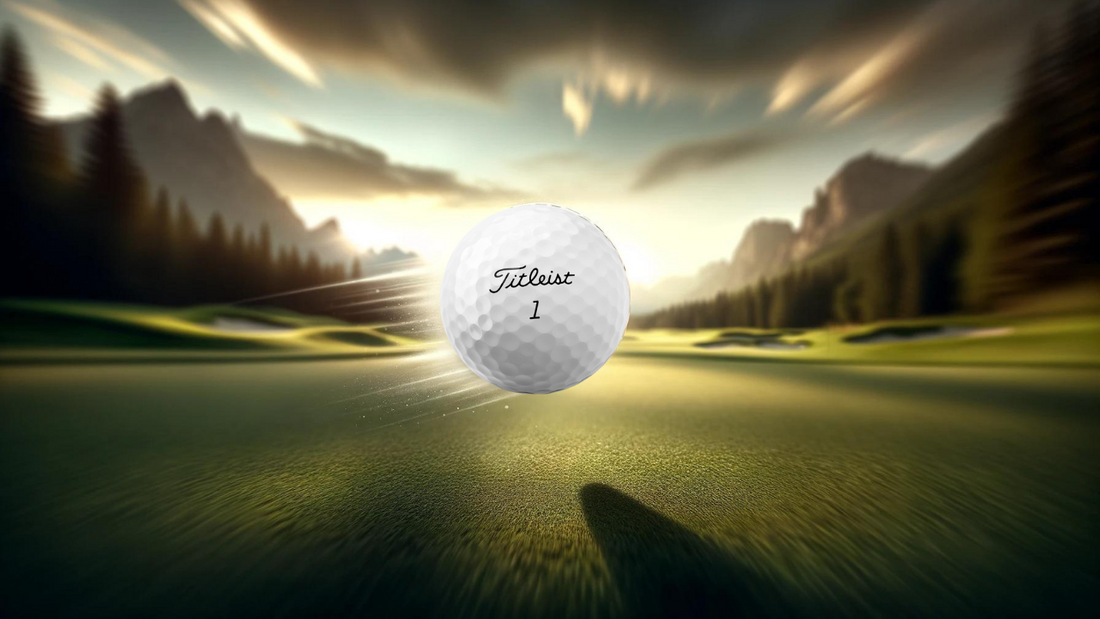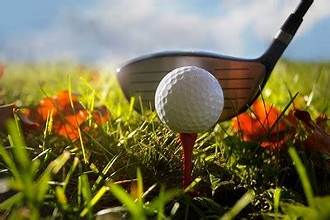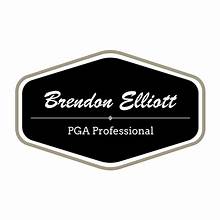When it comes to professional golf, every detail can impact the outcome of a game, and the choice of golf ball is no different. Golfers on the PGA Tour, LPGA, and other tours are meticulous in their selection process, often choosing a ball that complements their playing style and maximizes their performance on the course. The golf ball is the only piece of equipment used for every shot, which underscores its importance. Thus, understanding what golf balls the pros use offers insight into the high standards and preferences of elite players.

The golf ball market is dominated by a few key brands that are favored among professionals, with advanced technology and consistent performance being the primary reasons for their selection. Specific models have risen to prominence on the tours, and pros tend to gravitate towards balls that offer a blend of distance, spin, and control. Additionally, personalization and adaptation to environmental conditions are critical factors in choosing a ball. For instance, balls that perform well in windy conditions or provide better control on firm greens are pivotal in a pro's arsenal.
Key Takeaways
- Golf professionals choose balls that align with their playing style and aid performance.
- A few top brands are preferred by pros due to their advanced technology and reliability.
- Personalization and adaptation to course conditions are significant factors in ball selection.
Tour Favorites: Preferred Golf Balls by the Pros

When observing what golfballs the top professionals use, a few brands dominate the tour landscape. Titleist leads, particularly with their Pro V1 and Pro V1x models. According to a 2023 update, 71% of the top 100 PGA Tour pros choose one of these two variations of Titleist.
Callaway, Srixon, TaylorMade, and Bridgestone round out the list of preferred brands. Specifics vary, with different models catering to unique performance needs like spin and distance control. For instance, Callaway's Chrome Soft series and TaylorMade's TP5 variants offer distinct advantages to players.
Distribution Among Pros:
- Titleist: 71% (Pro V1, Pro V1x, Left Dot)
- Callaway: 10% (Chrome Soft series)
- Srixon: 10% (Z-Star series)
- TaylorMade: 7% (TP5 series)
- Bridgestone: 2% (Tour B series)
The Champions Tour reflects a similar trend, with Titleist garnering 84% preference among the top 100 senior pros, emphasizing their products' reliability across different levels of the sport. Callaway follows with 9%, and Srixon with 5%. Senior Tour data reinforce Titleist's stronghold in the market.
Players opt for these balls for their consistent performance, tour-tested designs, and advanced technological integration. The result of their choices is a pattern that clearly indicates the reliability and trust these brands command among professionals.
Brand Dominance: Top Manufacturers in Pro Golf Balls

In the realm of professional golf, a few brands stand out for their widespread adoption by players. Titleist leads the pack with a significant presence on the PGA Tour. According to a recent update, approximately 71% of the top 100 PGA players opt for Titleist golf balls, affirming the brand's stature and influence in the sport.
Other noteworthy brands include Callaway, Srixon, TaylorMade, and Bridgestone, each holding its own in terms of usage among professionals. It's not just about brand preference, but also about the distinct performance characteristics that these golf balls provide, such as control, distance, and feel.
Popular Golf Ball Brands Used in Professional Golf:
- Titleist: Preferred for consistency and performance under tournament conditions.
- Callaway: Known for innovative designs that cater to a golfer's need for control and distance.
- Srixon: Offers a blend of value and performance, with a focus on ball construction and flight stability.
- TaylorMade: Aspires to combine distance with control, making them favorites for players who seek an aggressive play style.
- Bridgestone: Emphasizes on precision and responsiveness, suiting players who favor a meticulous approach to the game.
While the above brands are prevalent among male PGA tour players, the selections for LPGA players show variety and competitive quality, suggesting a similar yet distinct trend in terms of preferences amongst professional female golfers.
Model Variations: Comparing Pro Golf Ball Choices

Professional golfers tend to select golf balls that provide the optimal balance of distance, spin, and control to complement their individual play style. The leading models used among professionals can be segmented into various categories based on their characteristic performance features.
-
Titleist: They dominate the pro circuit, with the majority of top players choosing the Titleist Pro V1, Pro V1x, or Pro V1 Left Dot. These models are known for consistency, exceptional performance, and delivering a balance of speed, spin, and feel.
-
Callaway: A significant number of professionals also opt for Callaway balls, such as the Chrome Soft X, which is engineered for high speeds, low spin off the tee, and control around the greens.
-
TaylorMade: Some players favor the TaylorMade TP5 and TP5x for their five-layer construction that promotes distance without sacrificing spin control.
-
Srixon: This brand is also in play with several tour professionals choosing their Z-Star series, providing an exceptional combination of distance, spin, and stopping power.
-
Bridgestone: Fewer professionals use the Bridgestone Tour B series, but they cater to those seeking precision and aerodynamics to maximize tour-level performance.
| Ball Model | Characteristics |
|---|---|
| Titleist Pro V1 | Balanced speed, spin, feel |
| Titleist Pro V1x | High trajectory, more spin |
| Callaway Chrome Soft X | High speed, low spin |
| TaylorMade TP5/TP5x | 5-layer, long distance |
| Srixon Z-Star | Distance, spin control |
| Bridgestone Tour B | Aerodynamics, precision |
Every model offers a unique advantage, be it in aerodynamics for long drives, or softer feel for improved short game finesse. Professionals choose based on courses, conditions, and personal preferences, thus creating a diverse range of choices that can cater to various aspects of the game.
Performance Factors: What Pros Look For

When professional golfers select a ball, they prioritize performance factors that align with their individual game. Each player has specific requirements, but there are general characteristics that typically influence their choices. Here are the performance factors that pros look for in golf balls:
Spin: Pros need a ball that provides the appropriate amount of spin for their play style. A higher spin can offer more control, particularly around the greens, which is essential for short game precision.
Distance: The potential distance a ball can travel is crucial. Pros look for balls that maximize their drive distance without sacrificing other performance aspects.
Feel: The feel of a ball is subjective but important. Golfers prefer a ball that feels comfortable and consistent from tee to green.
Durability: A professional golfer's equipment must endure the rigors of practice and play. They prefer balls that maintain their performance over multiple rounds.
Compression: Compression affects the transfer of energy from the club to the ball. Pros select a compression that matches their swing speed for optimal performance.
Trajectory: The ability to control ball flight and trajectory is important for pros playing in varied conditions.
To summarize, professional golfers look for golf balls that help them maintain control, maximize distance, offer a comfortable feel, and ensure consistent performance. While individual preferences may vary, these core factors guide their selection process.
Customization: How Players Personalize Their Golf Balls

Professional golfers often personalize their golf balls to suit their individual preferences and to distinguish their balls during play. Customization can range from simple markings to sophisticated designs, with several options available:
- Initials or Symbols: Players may opt to have their initials or a unique symbol printed on the ball.
- Numbers: Instead of the traditional 1 through 4, players might choose a significant number that's unique to them.
- Alignment Aids: Bold lines or patterns can serve as alignment aids, which are particularly useful on the putting greens.
A variety of brands offer customization, such as the Titleist personalized golf balls, where players can include messages or choose custom packaging. For those seeking a collaborative design, options like the TOUR B XS Tiger Woods Edition golf ball represent a partnership between the player and the brand, allowing amateurs to play with a ball curated by Tiger Woods.
Furthermore, personalization is not only for aesthetics but also serves practical purposes:
- Visibility: Golfers can choose from a spectrum of colors to enhance visibility.
- Identification: During competitions, a personalized ball is easier to identify, reducing the chances of playing the wrong ball.
Amateur players seeking personalization tips can learn how to personalize golf balls through various articles and guides. From inexpensive balls for beginners to premium options for seasoned players, adding a personal touch is an accessible feature for all skill levels.
Environmental Conditions: Adapting Ball Choice to the Course

When professional golfers prepare for a match, they consider the course conditions heavily to select the appropriate golf balls. Different courses with varying environmental conditions can significantly influence a golf ball’s performance. Here's how pros make their choice:
-
Weather: Pros may choose a ball with higher spin rates during wet conditions for better control. Conversely, in dry and windy conditions, a ball with a lower trajectory is often preferred to mitigate the wind's impact.
-
Temperature: The compression rating of golf balls can affect performance depending on the temperature. In colder weather, a lower-compression ball might be favored as it can travel further than a high-compression equivalent.
-
Fairway and Green Conditions: A softer ball may be chosen for fast greens to enhance stopping power, while a firmer ball might be used on slower greens for improved roll.
Here's a simple breakdown of choices based on conditions:
| Condition | Ball Choice Consideration |
|---|---|
| Wet | Higher spin for control |
| Windy and Dry | Lower trajectory for stability |
| Cold Temperature | Lower compression for distance |
| Fast Greens | Softer feel for stopping power |
| Slow Greens | Firmer feel for a controlled roll |
Professionals are adept at assessing the environment and tweaking their equipment to maintain the upper hand. It's the subtleties in a golfer's choice that can dictate the outcome of a swing, adhering to the adage that in golf, sometimes it's the smallest adjustments that make the biggest difference.
Tournament Wins: Golf Balls with Most Victories
When examining the golf balls that have amassed the most tournament victories, a few brands stand out due to their consistent presence in the winner's circle. Titleist golf balls, particularly the Pro V1 and Pro V1x, are at the forefront, with a dominant number of wins in PGA Tour events. According to a breakdown of top 100 PGA Tour players' preferences, approximately 71% of these players, many of whom are tournament winners, choose to play with one of these two Titleist models.
Bridgestone and Callaway also have a noteworthy record, with multiple tour victories credited to golfers using their balls. Callaway's Chrome Soft X, in particular, has been celebrated for its combination of control and distance, as seen in its selection by professionals as mentioned in this guide to pro golfer choices.
The table below briefly summarizes the brands and their popular models that have been linked to consistent tour wins, with a focus on recent data.
| Golf Ball Brand | Notable Model(s) | PGA Tour Wins |
|---|---|---|
| Titleist | Pro V1, Pro V1x | High |
| Callaway | Chrome Soft X | Moderate |
| Bridgestone | Tour B series | Moderate |
| TaylorMade | TP5, TP5x | Moderate |
| Srixon | Z-Star, Z-Star XV | Low |
These victories not only showcase the golf balls' superior performance but also build the brand's reputation among players of all skill levels.
Frequently Asked Questions
In this section, we address common inquiries regarding the golf ball preferences of professional players and how those choices may impact the amateur golfer's game.
Which golf balls are preferred by the majority of professional players?
The majority of professional golfers, including top-ranked players, often choose Titleist golf balls, specifically the Pro V1 and Pro V1x models due to their quality, consistency, and performance.
How do golf ball preferences vary between male and female professional golfers?
While male professionals may prioritize golf balls that enhance distance and control, female professionals might select balls that provide better feel and spin control. Despite individual nuances, quality and performance are pivotal for both.
What type of golf balls do top-ranked professional golfers like Jon Rahm and Tiger Woods use?
Top-ranked players such as Jon Rahm and Tiger Woods typically utilize premium golf balls designed for advanced play. Woods has been associated with using Bridgestone golf balls, while specific preferences can vary over time with changes in performance needs and endorsement deals.
Can amateur golfers benefit from using the same golf balls as the pros, and why?
Amateurs can definitely benefit from using the same golf balls as the pros, as these balls are engineered for optimal performance such as better distance, feel, and spin control which can improve the amateur's game.
Are there any professional golfers who endorse lesser-known golf ball brands?
Some professional golfers do endorse lesser-known brands, often to promote innovation and competition in the market. These endorsements help bring visibility to alternative options that may offer unique advantages.
What are the performance differences between the golf balls used by pros and those available for amateur players?
The primary performance differences lie in construction and technology. Golf balls used by pros are typically multi-layered with urethane covers for improved feel and control, while amateur balls may have a simpler construction and focus on durability and cost-effectiveness.
 from Over 100,000 Reviews
from Over 100,000 Reviews




